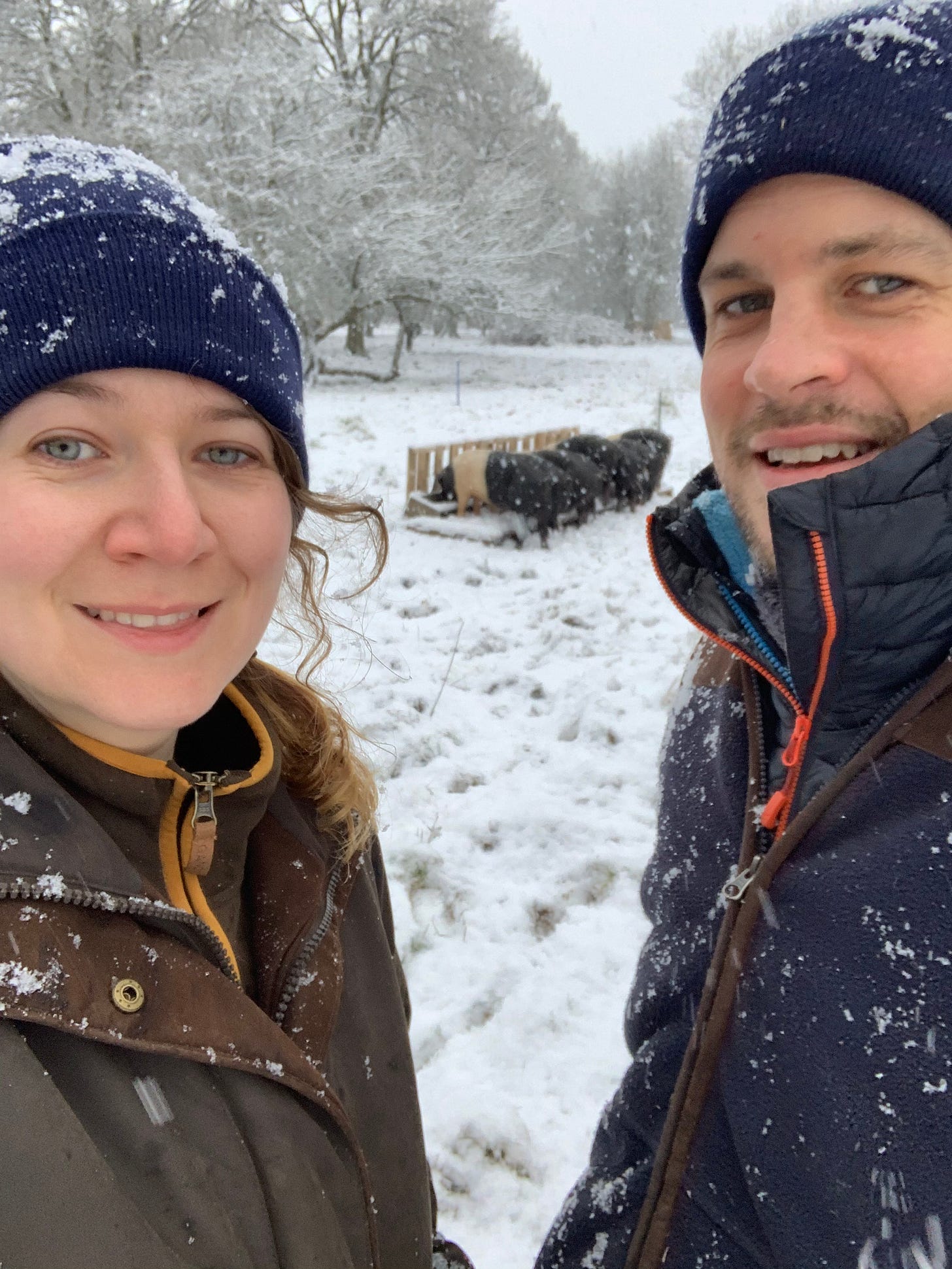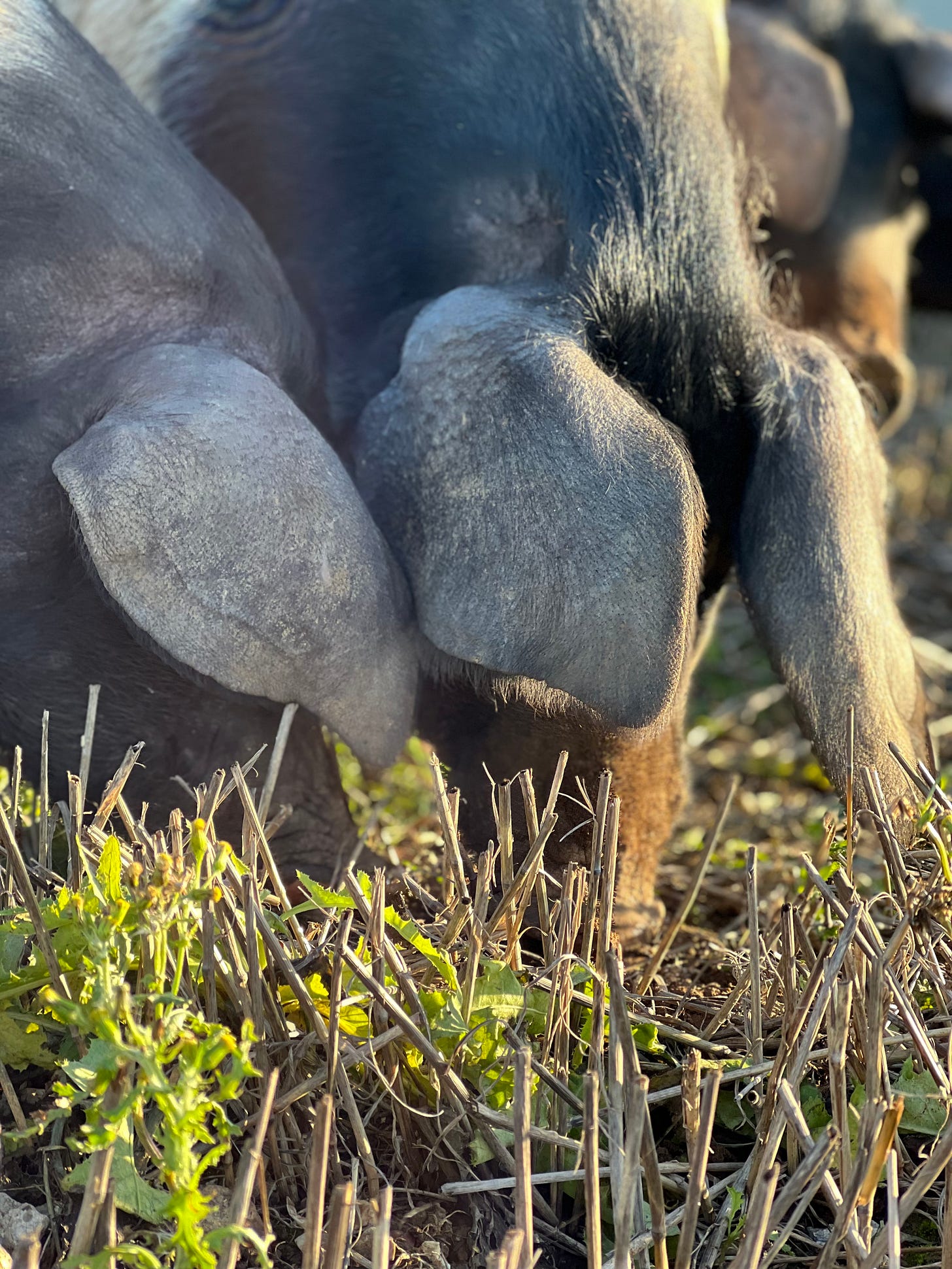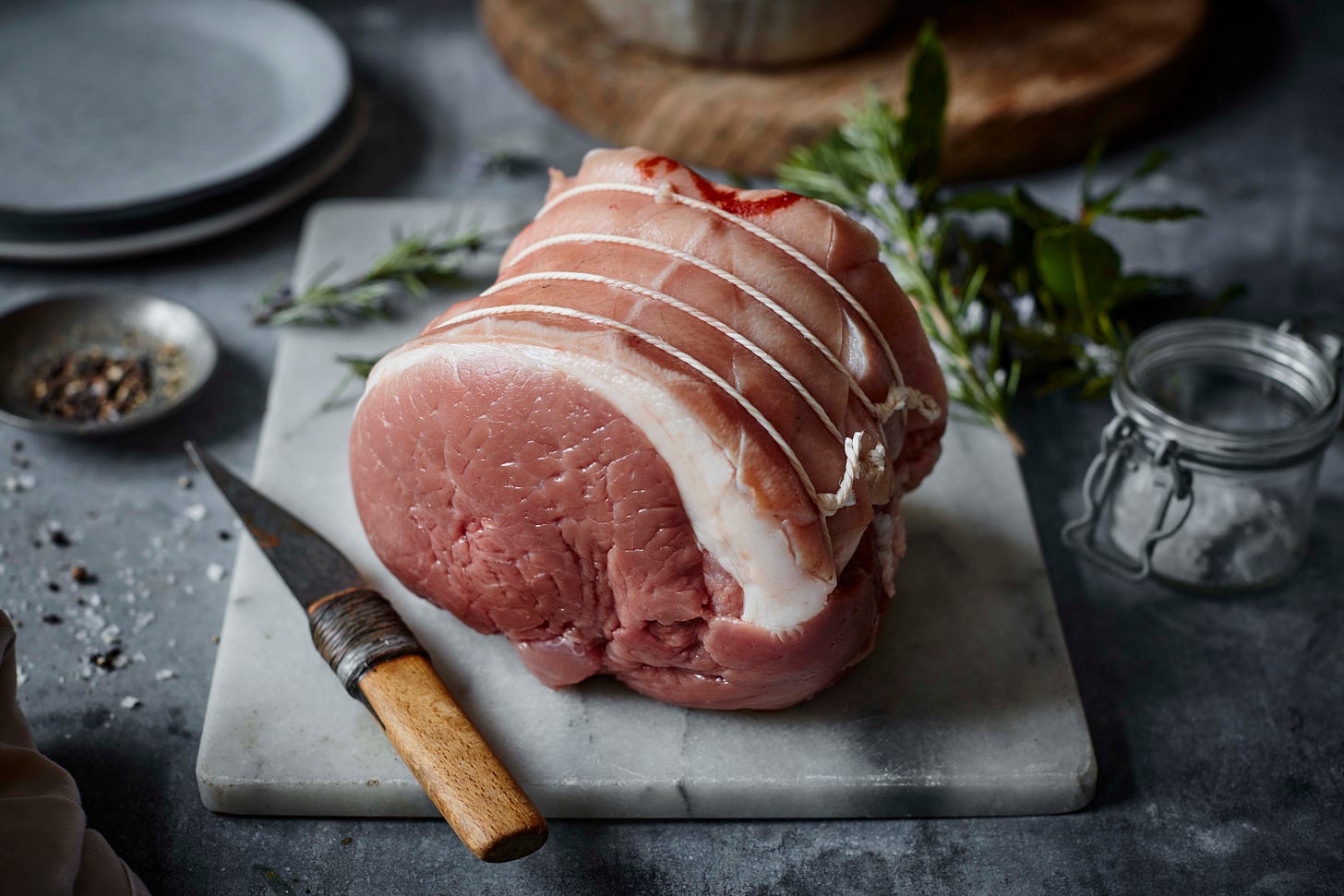Why Saddlebacks?
The Pig Breed That Built Our Farm
When we started pig keeping, we had no idea which breed would suit us best. All we knew was that we wanted pigs that could thrive in the outdoors, work with nature, and produce pork that people would come back for. Choosing a native rare breed felt right—supporting traditional British pigs aligned with everything we believed in.
But which one?
Some rare breeds had incredible meat but weren’t suited to outdoor life. Others were hardy but impossible to handle. After a lot of research (and a bit of gut instinct), we settled on British Saddlebacks—and I can confidently say, we’d choose them again in a heartbeat.
A Breed Built for the Outdoors
One of the biggest challenges in outdoor pig farming is weather resilience. The British climate isn’t kind—weeks of non-stop rain, freezing nights, summer heat waves. Some pigs, like Large Whites, don’t cope well outdoors. Saddlebacks? They thrive.
Their thick skin and natural adaptability mean they handle the worst of UK weather. In winter, they grow a shaggy coat, then shed it in summer. Our boar, Wiggam, would grow a thick, curly winter coat—he looked like a woolly mammoth. But come spring, he’d be sleek and ready for wallowing in the sun.
I’ll never forget the first real cold snap we had with pigs. While some breeds might have struggled, our Saddlebacks huddled together in their arks, grunting in protest at the idea of getting up for breakfast. They weren’t stressed or suffering—they were smart. On wet, miserable days, they do the same: eat, then straight back to bed. Honestly, I can’t blame them.
Hardiness like that is invaluable when you’re farming on a budget and can’t throw up a new barn every time the weather turns bad.
Natural Foragers, Perfect for Regenerative Farming
Saddlebacks are born to root—which can be both a blessing and a curse. Unlike commercial breeds that rely on high-protein grain-based diets, these pigs are expert foragers, making them ideal for regenerative systems.
We experimented with rotating our pigs after arable crops like barley and potatoes, and the results were game-changing. The pigs cleared leftover forage, fertilised the land naturally, and reduced the need for artificial inputs. In the right system, I’ve seen farmers cut feed costs by 70% just by maximising natural forage.
Of course, their love for rooting means you can’t leave them in one place too long, or they’ll turn the ground into a ploughed mess. We’ve had some… creative disagreements with contractors who followed our pigs in the rotation. They like neat, machine-ploughed fields. Our pigs? They do it the natural way. Not as pretty, but just as effective!
Temperament: The Gentle Giants of the Pig World
If you’ve ever worked with pigs, you’ll know temperament is everything. Some breeds, like Tamworths, are incredible foragers but too flighty. Others, like Berkshires, are friendly but don’t always thrive in extensive systems.
Saddlebacks? They hit the sweet spot. Docile, smart, and easy to handle. They’re also exceptional mothers, which is why we started breeding them.
When our first litters were due, we were nervous wrecks. Five sows farrowed back-to-back in the bleakest February we’d had in years. Matt and I spent the week sleeping in the truck, watching over them, waiting for something to go wrong. But the pigs? They had it handled.
One of my favourite sows even let me sit with her while she farrowed, resting her head in my lap. Not many pigs will let you near them while giving birth, let alone welcome you into the moment.
That said, never underestimate a determined sow. We’ve had them break out, reject a perfectly good pen, and instead build their nest deep in a hedge. We’ve learned to respect that instinct—sometimes, they just know better than we do.
The Pork That Ruined Me for Supermarket Meat
Let’s be real—flavour matters. You can do everything right in terms of ethics and sustainability, but if the pork doesn’t taste incredible, what’s the point?
Saddleback pork is rich, well-marbled, and full of depth. Unlike commercial pigs, which are bred for lean, pale meat,these pigs produce the best bacon you’ll ever taste.
Dry-cure it for two weeks in salt? Absolute perfection. I’ll share our bacon cure recipe one day, but trust me—it’s worth it.
The only “downside”? They do carry more fat. If you’re looking for ultra-lean pork, you might struggle. The loin is the fattiest cut on a Saddleback, so we steer customers toward the leg for a leaner roasting joint while celebrating the belly, shoulder, and ribs for their melt-in-the-mouth goodness.
Managing expectations is key—once people know what they’re buying, they appreciate it.
Would You Read a Whole Book on This?
I’m working on an eBook all about rare breed pig keeping—from choosing the right breed to setting up fencing, feeding hacks, and actually making money from pigs.
All from my experience building a pig business from a hobby farm to a commercial enterprise.
Would you be interested? Drop a ‘yes’ in the comments! And if you’ve got questions about Saddlebacks (or pigs in general), let’s chat.
🐖 Join The Pig Pen Chat! 🐖
I love sharing my experiences with rare breed pigs, but even more, I love hearing your stories. Whether you’re already raising pigs, thinking about it, or just passionate about high-welfare farming, I want to create a space where we can swap advice, talk pig breeds, and share the highs and lows of pig-keeping.
So, I’m opening up The Pig Pen Chat—an exclusive space for paid subscribers to ask me anything, share their own pig-keeping journeys, and get real, unfiltered insights on everything from fencing fails to feed hacks.
This isn’t just a Q&A—it’s a proper chat, like pulling up a bucket in the barn and talking shop.
🐷 Upgrade to a paid subscription to join in. Let’s talk pigs! 🐷







